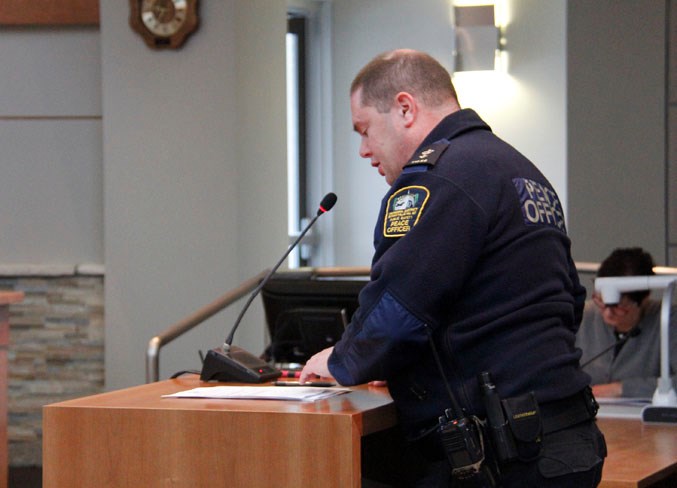Combating rural crime is a concern for the region, which is why when local officials sat down to discuss the joint funding being provided through the ID 349, they decided to use it for just that.
Under the redrafted ID 349, funding was allotted for intermunicipal projects. Once the municipalities and settlements included within the agreement settle on a joint project, they submit it to Alberta Municipal Affairs for approval.
During the MD of Bonnyville’s regular council meeting on Wednesday, Jan. 9, they discussed how they plan on using the money.
“We had a joint meeting with all of the players from the committee, so that’s the town, city, Glendon, the two settlements… From that meeting, we had a number of RCMP there and they talked about what kind of options we had when it comes to using this ID 349 committee funding,” explained MD of Bonnyville Reeve Greg Sawchuk. “It went around the table lots, everyone recognizes the need for crime prevention, and the settlements were very strong on wanting something done.”
As a result, S/Sgt. Jeremie Landry, acting operations officer for the Eastern Alberta District, provided a few recommendations for the joint committee’s consideration.
One of the options was the creation of a team that would support the Regional Eastern Alberta District Rural Crime Reduction Unit.
It would consist of three RCMP members and a support staff position, and comes at a cost of $474,000 per year, plus wages for the support staff.
“The reason for the staff member… was to the fact that when you have officers, you don’t want them being tied up with paperwork,” Sawchuk detailed.
The team, which would work throughout the region, would be signed on for a minimum of three years, for a total cost of over $1.6-million.
Director of public safety for the MD Chris Garner explained how incorporating the hub model may also be affective.
“It’s an approach more on a social level than an enforcement level,” he stated.
The model is being used in Prince Albert, SK, as a way of reducing crime through social issues by focusing on improving communities “through the partnership and mobilization of multiple agencies and organizations with the overall goal of increasing effectiveness of resources by connecting high-risk individuals with appropriate resources,” said Garner.
“They decided to think outside of the box, and they looked around and came up with this model which is used in other areas very effectively.”
Garner noted this method may be beneficial for the Lakeland, because similarly to Saskatchewan, the region faces social challenges such as substance abuse, high-risk populations, and inadequate housing for its vulnerable populations.
The hub method brings various agencies from within the region together to work on a particular issue or individual facing one or more of these challenges.
“I think this is a great model. The RCMP, they know who’s doing these crimes. It’s the same people and you see them in the community, but you can’t do anything about it,” expressed Coun. Dana Swigart, adding he would like to see this model included in their application for Alberta Municipal Affairs.
Garner agreed, “This is to break that cycle. You have repeat offenders that keep going around and around and nothing ever changes… This is to try to break that cycle and get to the cause of the problem.”
According to Sawchuk, it could take six months or more for the municipalities to see a team, if it’s approved by the province.
“It wouldn’t happen right away,” he added.
During their joint discussions, there was talk of adding another police dog unit to the area.
“They were asking a lot of questions about dog units and wanting more, but when it came down to that, the RCMP made a good point in that these dogs have to be worked all of the time. Just adding more dogs will water it down and the dog doesn’t get enough training and they become less effective. They need to be getting out there and be running on a regular basis,” explained Sawchuk.



